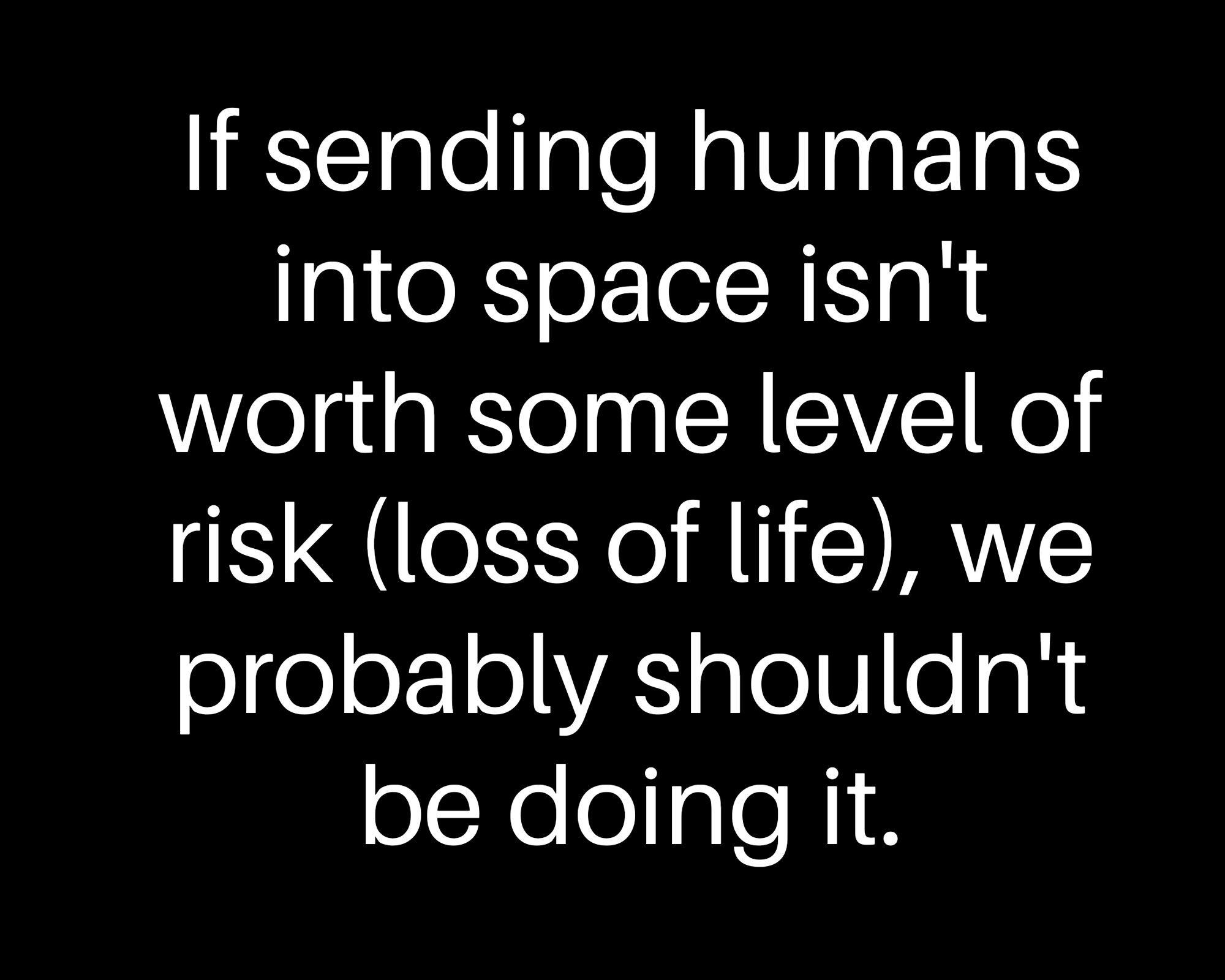Safety Culture: NASA’s Debilitating Obsession With Safety
ON THIS PAGE
Of all the topics I write about, explaining how NASA’s obsession with safety is a bad thing might be one of my biggest challenges.
Before I begin, let’s go ahead and get this straight. I think we can all agree that no one wants to cut corners when it comes to crew safety. Doing everything that’s reasonably possible not to have loss of life is at our core.
But I think we can all also agree that every human launched into space carries a pretty sizable amount of risk.
Safety Dysfunction
The safety dysfunction I’m talking about comes in two parts: (1) an obsession with cube safety, and (2) an unreasonable tolerance for risk.
I’ll unpack all this in more depth in the articles below. Here I’ll make this quick point that billion-dollar engineering support contracts can be won or lost based on contractor metrics of how many engineers slip, trip, or fall as part of their desk jobs.
No. I’m not joking. I was a voting member on two large NASA procurements, and it was something we asked for and scored.
The second part of the safety dysfunction is about having an unreasonable approach to accepting risk (loss of life and/or flight hardware) as a cost of exploration. In this area, NASA has lost its way.
People die in aviation accidents every year. People die climbing tall mountains for no real purpose other than to explore every year. People die in car accidents on the way to work every day.
Why is our tolerance for loss of crew near zero?

NASA Safety and Fear
Safety is a cousin to fear. And fear without urgency leads to inaction and delays—which leads to NASA buying seats on Russian launch vehicles for American astronauts because NASA didn’t have one.
And when NASA doesn’t have launch vehicles to manage, NASA managers have less to do. So they cycle back to talking about cube safety as though it’s a meaningful metric to measure our success when it clearly isn’t—or at least it shouldn’t be.

The way NASA uses safety as a crutch is a cancerous cycle that needs to be broken—if there’s any hope of the agency continuing to exist.
All Articles About NASA’s Safety Culture
NASAology News and Notices.
Exclusive content. Delivered to your inbox weekly.
We hate SPAM too.
Unsubscribe at any time.
David Mixson writes about Old Space and New Space. He worked as an engineer at NASA for more than thirty years and is the author of three books.

